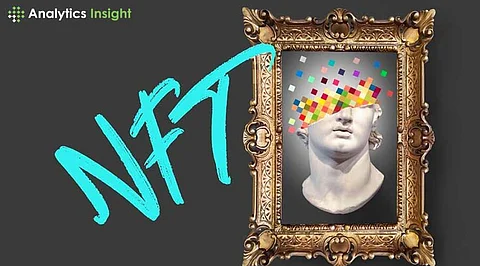

Non-Fungible Tokens (NFTs) have experienced a rollercoaster journey since their emergence, captivating the digital world with unprecedented highs and sobering lows. As 2025 unfolds, investors and enthusiasts are keen to understand the current state of the NFT market and its viability as an investment avenue.
NFTs revolutionized the concept of digital ownership, allowing creators to tokenize art, music, and virtual assets on blockchain platforms. This innovation led to a surge in NFT popularity, with sales reaching billions of dollars. However, the market's rapid expansion also brought challenges, including market saturation, speculative investments, and environmental concerns.
Following the initial boom, the NFT market underwent a significant correction. High-profile sales became less frequent, and the speculative frenzy subsided. This downturn prompted a reevaluation of NFT utility and value, leading to a more mature and stabilized market by 2025.
Several key trends have emerged, influencing the NFT market's trajectory in 2025:
A notable development is the tokenization of real-world assets (RWAs). NFTs are now being used to represent ownership of physical items such as real estate, luxury goods, and intellectual property. This integration enhances liquidity and accessibility, providing investors with new opportunities to diversify their portfolios.
The focus has shifted from purely collectible NFTs to those offering tangible utility. For instance, NFTs are being utilized in decentralized finance (DeFi) platforms, granting holders access to exclusive services, governance rights, or revenue-sharing models. This utility-driven approach adds intrinsic value to NFTs beyond mere ownership.
Environmental concerns associated with energy-intensive blockchain networks have led to the adoption of more sustainable practices. Eco-friendly NFTs, minted on energy-efficient blockchains, are gaining traction among environmentally conscious creators and collectors.
Assessing NFTs as an investment in 2025 requires a nuanced understanding of the market dynamics:
Investors are advised to approach NFTs as part of a diversified investment strategy. While certain NFTs have demonstrated substantial returns, the market remains volatile. Diversification across various asset classes can mitigate potential risks associated with NFT investments.
Conducting thorough due diligence is paramount. Verifying the authenticity of NFTs, understanding the credibility of creators, and assessing the underlying value proposition are essential steps to make informed investment decisions.
The regulatory environment for NFTs is evolving. Governments and financial authorities are formulating frameworks to address issues related to intellectual property, taxation, and consumer protection. Staying informed about regulatory developments is crucial for investors to navigate the market effectively.
Examining recent examples provides insights into the NFT market's current state:
Major auction houses, such as Christie's and Sotheby's, have embraced NFTs, accepting cryptocurrency payments and hosting NFT auctions. This integration has attracted a new demographic of tech-savvy collectors, bridging the gap between traditional art markets and digital assets.
Certain NFT projects have faced challenges due to market saturation and declining interest. For instance, the Australian Open's Artball program, which linked NFTs to physical tennis court locations, experienced a significant drop in value, with some NFTs losing up to 90% of their initial worth. This underscores the importance of evaluating the long-term value proposition of NFT projects.
Looking ahead, the NFT market is poised for continued evolution:
Advancements in blockchain technology, including improved scalability and interoperability, are expected to enhance the functionality and accessibility of NFTs. These developments could lead to more seamless integration across various platforms and industries.
As NFTs find applications in diverse sectors such as gaming, entertainment, and finance, mainstream adoption is likely to increase. This broader acceptance could contribute to market growth and stability.
Ongoing education efforts are essential to inform investors about the complexities of NFTs. Understanding the technology, market dynamics, and potential risks will empower investors to make informed decisions.
In 2025, NFTs continue to present intriguing investment opportunities, characterized by innovation and diversification. However, the market's inherent volatility necessitates a cautious and informed approach. Investors should conduct comprehensive research, remain vigilant about market trends, and consider NFTs as part of a balanced investment portfolio. By doing so, they can navigate the evolving landscape of NFTs and capitalize on potential opportunities while mitigating risks.
